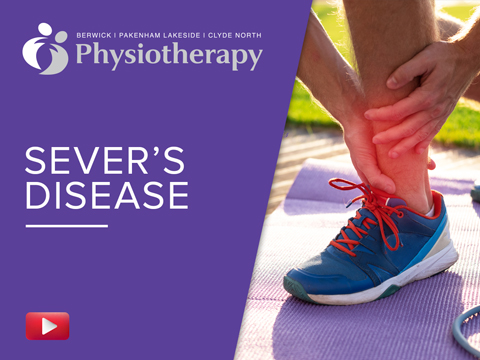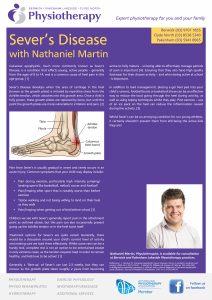Calcaneal apophysitis, much more commonly known as Sever’s Disease, is a condition that effects young, active people – generally from the ages of 8 to 14, and is a common cause of heel pain in this age group. [1]
Sever’s Disease develops when the area of cartilage in the heel (known as the growth plate) is irritated by repetitive stress from the Achilles tendon, which attaches into this growth area. Once a child is fully grown, these growth plates are replaced by bone, but until this point the growth plates are more vulnerable to irritation and pain. [2]
Pain from Sever’s is usually gradual in onset and rarely occurs in an acute injury. Common symptoms that your child may display include:
- Pain during exercise, particularly high intensity jumping/landing sports like basketball, netball, soccer and football
- Pain/limping after sport that is notably worse than before exercise
- Tiptoe walking and not being willing to land on their heel as they walk
- Pain/limping when getting out of bed before school [3]
Children we see with Sever’s generally report pain in the attachment point as outlined above, but this pain can also occasionally present going up the Achilles tendon or in the heel bone itself.
Treatment options for Sever’s are quite varied. Generally, there would be a discussion around your child’s current level of activity and making sure we load them effectively. Whilst some rest can be a handy tool, complete rest is not an option to be entertained except in only extreme cases, as the tendon requires load in order to remain healthy, and kids love to be active! [1]
Generally a ‘flare-up’ of Sever’s can last 2-3 weeks, but they can reoccur as the growth plate takes roughly 2 years from becoming active to fully mature – so being able to effectively manage periods of pain is important [4]. Ensuring that they also have high quality footwear for their chosen activity – and when being active at school – is important.
In addition to load management, placing a gel heel pad into your child’s runners, football boots or basketball shoes can be an effective way to reduce the load going through the heel during activity, as well as using taping techniques whilst they play. Post exercise – use of an ice pack on the heel can reduce the inflammation caused during the activity. [5]
Whilst Sever’s can be an annoying condition for our young athletes, it certainly shouldn’t prevent them from still being the active kids they are!


